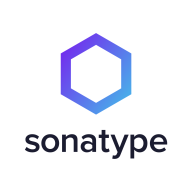

Find out what your peers are saying about Veracode, OpenText, Checkmarx and others in Static Code Analysis.
We have seen cost savings and efficiency improvements as we now know what happens in what was previously a black box.
The technical support has been good because we always received answers to our questions.
The customer service and support for Fortify Static Code Analyzer are better than those for LoadRunner.
They are helpful when we raise any tickets.
Fortify Static Code Analyzer integrates well and is scalable.
It handles high availability at the database level, such as synchronizing JFrog repository servers without complicated configurations.
The stability of Fortify Static Code Analyzer is generally good.
I would rate the product stability as an eight.
Sonatype Lifecycle is very stable, especially in the binary repository management use case for managing binary artifacts.
We are not ready to transfer our code without control to AI instruments.
While it includes all the OWASP top factors, AI has come into the picture, so those updates should also be considered.
It should be easier to install, perhaps through a container-based approach where everything is combined into one image or pack of containers.
We also noticed a lack of detailed information for configuring Sonatype Lifecycle for high availability and data recovery.
My experience with the pricing, setup costs, and licensing has been good.
The pricing of Fortify Static Code Analyzer is good, with a flexible model that allows customers to choose a setup that suits their needs.
For larger numbers like our case with 1,000 user licenses, JFrog becomes much more cost-effective, roughly ten times cheaper than Sonatype.
Fortify Static Code Analyzer has the capability of giving fewer false positives compared to other tools.
The most impactful feature of Fortify Static Code Analyzer in identifying vulnerabilities is the ratio of total number of vulnerabilities to false positives.
The most valuable feature of Fortify Static Code Analyzer is its extensive language support, covering many languages from legacy ones to the newest.
The integration into our CICD pipeline enables us to continuously monitor code changes and identify new vulnerabilities.
The most valuable feature for us is Sonatype Lifecycle's capability in identifying vulnerabilities.


Fortify Static Code Analyzer (SCA) utilizes numerous algorithms in addition to a dynamic intelligence base of secure coding protocols to investigate an application’s source code for any potential risk of malicious or dangerous threats. Additionally, the solution will prioritize the most critical concerns and give direction on how users can repair those concerns. This solution researches each and every potential route that workflow and data can travel to discover and repair all possible vulnerabilities. Fortify SCA allows users to create safe and secure software quickly. Users are able to discover potential security gaps more quickly with precise outcomes and repair them immediately.
Fortify Static Code Analyzer Benefits
Fortify Static Code Analyzer Features
Results from Real Users
“Fortify Static Code Analyzer tells us if there are any security leaks or not. If there are, then it's notifying us and does not allow us to pass the DevOps pipeline. If it finds everything's perfect, as per our given guidelines, then it is allowing us to go ahead and start it, and we are able to deploy it.” - Arun D., Senior Architect at a healthcare company.
“Its flexibility is most valuable. It is such a flexible tool. It can be implemented in a number of ways. It can do anything you want it to do. It can be fully automated within a DevOps pipeline. It can also be used in an ad hoc, special test case scenario and anywhere in between.” - Tom H., Director of Security at Merito
Sonatype Lifecycle is an open-source security and dependency management software that uses only one tool to automatically find open-source vulnerabilities at every stage of the System Development Life Cycle (SDLC). Users can now minimize security vulnerabilities, permitting organizations to enhance development workflow. Sonatype Lifecycle gives the user complete control over their software supply chain, allowing them to regain wasted time fighting risks in the SDLC. In addition, this software unifies the ability to define rules, actions, and policies that work best for your organizations and teams.
Sonatype Lifecycle allows users to help their teams discover threats before an attack has the chance to take place by examining a database of known vulnerabilities. With continuous monitoring at every stage of the development life cycle, Sonatype Lifecycle enables teams to build secure software. The solution allows users to utilize a complete automated solution within their existing workflows. Once a potential threat is identified, the solution’s policies will automatically rectify it.
Benefits of Open-source Security Monitoring
As cybersecurity attacks are on the rise, organizations are at constant risk for data breaches. Managing your software supply chain gets trickier as your organization grows, leaving many vulnerabilities exposed. With easily accessible source code that can be modified and shared freely, open-source monitoring gives users complete transparency. A community of professionals can inspect open-source code to ensure fewer bugs, and any open-source dependency vulnerability will be detected and fixed rapidly. Users can use open-source security monitoring to avoid attacks through automatic detection of potential threats and rectification immediately and automatically.
Reviews from Real Users
Sonatype Lifecycle software receives high praise from users for many reasons. Among them are the abilities to identify and rectify vulnerabilities at every stage of the SDLC, help with open-source governance, and minimize risk.
Michael E., senior enterprise architect at MIB Group, says "Some of the more profound features include the REST APIs. We tend to make use of those a lot. They also have a plugin for our CI/CD.”
R.S., senior architect at a insurance company, notes “Specifically features that have been good include:
• the email notifications
• the API, which has been good to work with for reporting, because we have some downstream reporting requirements
• that it's been really user-friendly to work with.”
"Its engine itself is most valuable in terms of the way it calculates and decides whether a security vulnerability exists or not. That's the most important thing. Its security is also pretty good, and its listing about the severities is also good," says Subham S., engineering tools and platform manager at BT - British Telecom.
We monitor all Static Code Analysis reviews to prevent fraudulent reviews and keep review quality high. We do not post reviews by company employees or direct competitors. We validate each review for authenticity via cross-reference with LinkedIn, and personal follow-up with the reviewer when necessary.